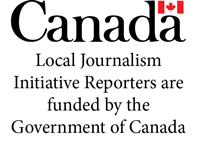COVID may be attacking young and old, rich and poor, employed and unemployed at will, but the impact of the pandemic has not been the same for everyone.
Consider measures people are advised to take to avoid getting the virus – stay home as much as you can, work from home, and have your groceries and other necessities delivered.
Working from home is pretty much a white-collar, middle-management privilege; not an option for those who earn their living serving coffee at the drive-thru, doing factory work, driving a truck, or doing dozens of other jobs in service, retail and health-care sectors.
Getting groceries delivered may be safe and convenient, but it comes with a hefty price tag. It is ironic that the people who need the service the most – the elderly and those in poor health – are the ones least able to afford it.
Then there are appointments, COVID-style. Phone when you arrive, and wait in your car until called to come inside. It works beautifully – for those who have phones and cars. Not everyone does.
Getting tested for COVID, whether through acquiring a rapid test kit or more conventional testing, has come to mean waiting in line for hours, often outdoors in brutal cold – not something the elderly, people with young children, or those with physical challenges can do.
Then there is remote learning, a euphemism for computer school. It depends on children having access to a decent computer and a good internet connection, not to mention a parent or caregiver who is part techno-wizard, part Mary Poppins, understands the new math, speaks both official languages, and can afford time off work.
The kids who generally do well in school will get through another couple of weeks of remote learning with no ill effects, whether they take to computer school like so many little fish to water, or whether they regard it as a form of torture. The kids for whom school is a struggle at the best of times will fall further behind or drop off the educational radar completely, increasing the probability of a lifetime of marginal employment.
People who live in urban apartment complexes and depend on public transit have a much higher chance of contracting COVID than rural or suburban residents who live in single family homes and own cars.
Those who live in congregate settings – government lingo for nursing homes, group homes, shelters, jails and rooming houses – are at even greater risk. COVID spreads like wildfire in such places, especially the Omicron variant.
Those hit hardest are people without a permanent residence. Being told to “isolate at home” is a cruel joke to someone who has no home in which to isolate. Some are faced with the choice of going to a shelter, where the chance of getting exposed to COVID is sky-high, or risk freezing to death on the street.
If COVID has accomplished nothing else, it has raised our awareness of numerous inequities that exist in our society. We see where the fault lines are and we have been taking action – often small steps when giant leaps are needed, but we comfort ourselves by knowing it is in the right direction.
The shortage of health care professionals, especially nurses, is not new. It has been with us for two decades. Now, with cases of COVID spiking at a terrifying rate, we have a situation where the need has outstripped the availability of health-care resources. It is not a future danger to fear; it is our present reality.
We do not need a crystal ball to predict how health-care resources will be allocated, or that an increasing number of people will die from treatable conditions.
Future generations will judge our society not by how we treated our wealthy and privileged, but by how we cared for our most vulnerable – the poor, the elderly, the fragile and those with physical and mental challenges.
Where the nursing shortage is concerned, we cannot waste time with tentative small steps. We need that giant leap forward, now.



